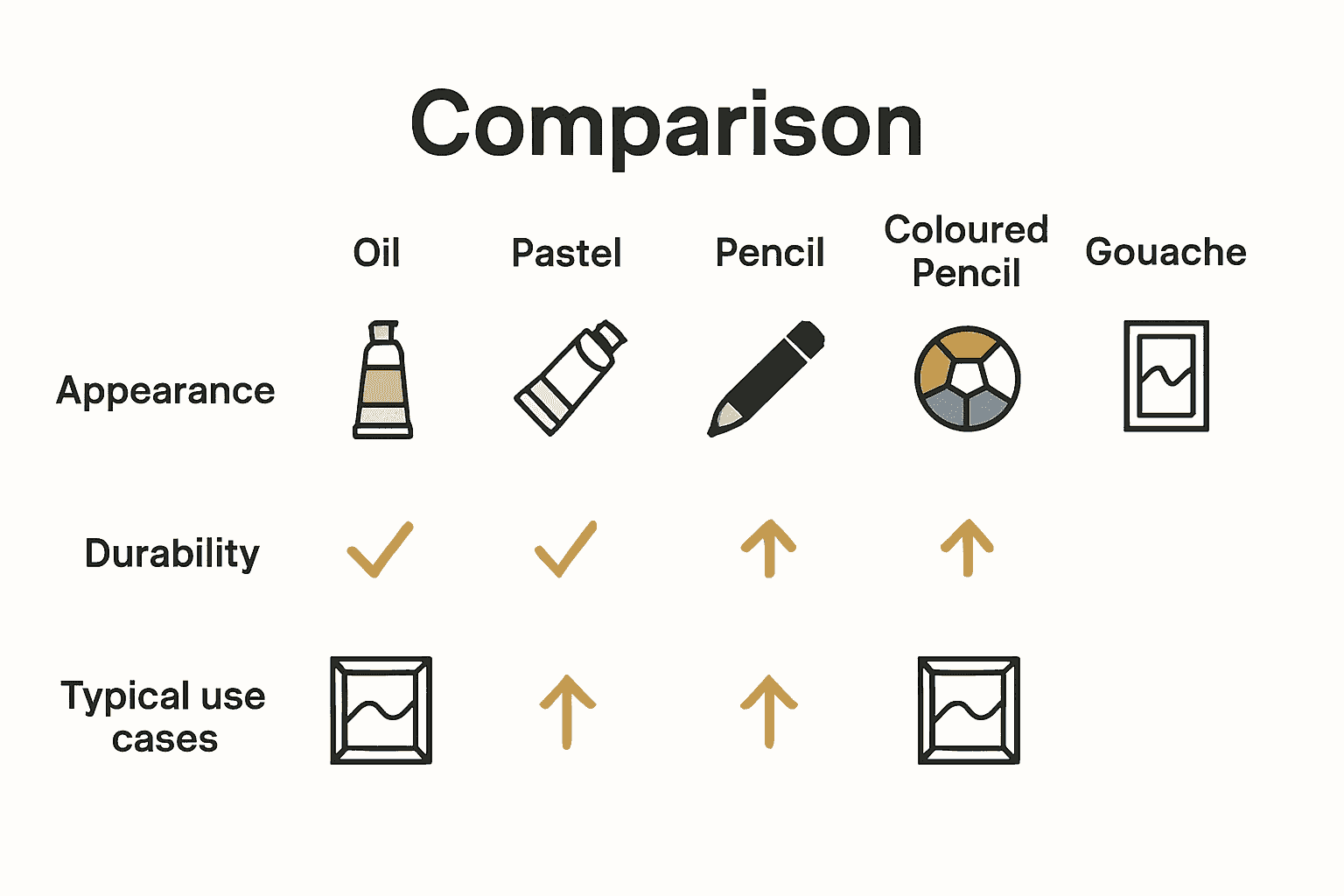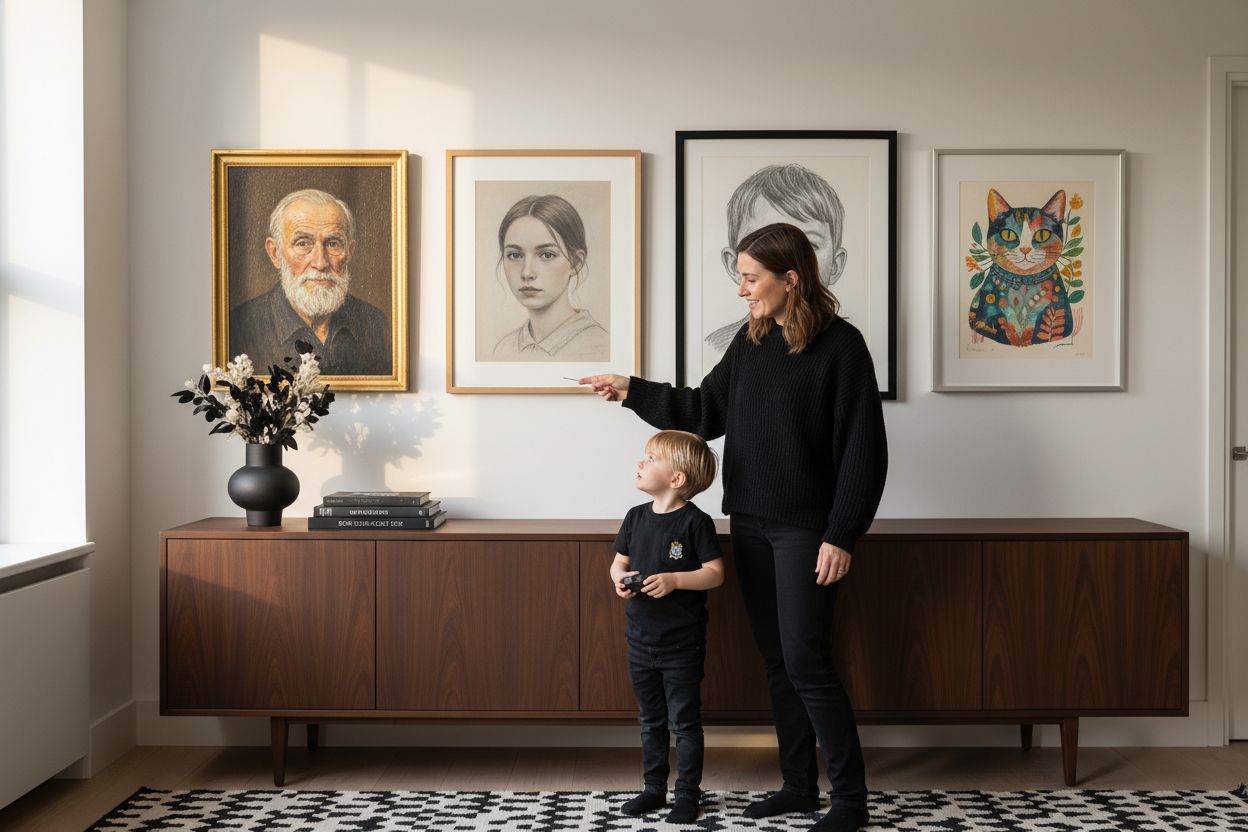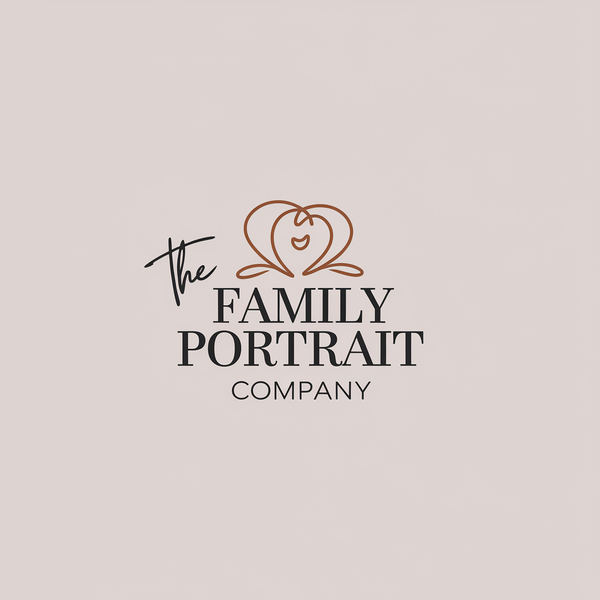
Portrait Process Explained: Complete Guide (UK)
Share
More than 60 percent of portrait buyers say they want a piece that feels deeply personal, not just a copy of a photograph. Commissioning a portrait offers a rare chance to create lasting artwork that reflects true personality and captures moments that matter. Whether you are considering a tribute, a family memory, or a unique piece for your home, understanding the portrait commission process will help you turn a simple idea into an heirloom filled with meaning.
Key Takeaways
| Point | Details |
|---|---|
| Commissioning a Portrait | The process is collaborative, involving defining the brief, selecting an artist, and ongoing communication throughout creation. |
| Choosing Medium and Style | Selection of the artistic medium significantly affects the portrait’s appearance and longevity; consider the subject’s personality and intended display. |
| Pricing Transparency | Portrait costs can range widely; clients should clarify total expenses upfront and understand payment structures involving deposits. |
| Communication Importance | Avoid common pitfalls such as misunderstandings and unrealistic expectations by establishing clear agreements and maintaining regular updates with the artist. |
Table of Contents
- What Is The Portrait Commission Process
- Portrait Styles And Medium Options
- Step‑By‑Step Commission Workflow
- Photo Requirements And Preparation
- Pricing, Payments, And Timing
- Common Pitfalls And How To Avoid Them
What Is The Portrait Commission Process
A portrait commission transforms a cherished photo into a personalised piece of art that captures emotion, personality, and memories. Unlike standard photographic reproductions, commissioned portraits involve a collaborative creative process between you and an artist who will interpret your vision with skill and sensitivity.
The typical portrait commission process unfolds through several strategic stages. According to the Royal Society of Portrait Painters, these stages generally include:
- Defining the Brief: Clarifying your vision, including subject details, desired artwork size, preferred artistic medium, and expected timeline
- Artist Selection: Choosing a professional artist whose style resonates with your aesthetic preferences
- Consultation and Agreement: Discussing specific requirements and securing the commission with an initial deposit
- Creation Process: Providing reference materials and potentially participating in live sittings or photo sessions
- Final Approval and Delivery: Reviewing the artwork, making any requested refinements, and receiving your completed portrait
Independent UK portrait artist Zoe Starhilton emphasises the importance of clear communication throughout the process. Her professional workflow highlights that regular updates and collaborative feedback ensure you’ll be delighted with the final artwork. Whether you’re seeking a family portrait, a pet memorial piece, or a personal keepsake, understanding this process helps transform your vision into a treasured artistic representation.
Portrait Styles And Medium Options
Choosing the right artistic medium is crucial in creating a portrait that truly reflects your vision and captures the essence of your subject. Our guide on personalizing portraits can help you navigate this creative decision with confidence.
According to the Royal Society of Portrait Painters, UK portrait commissioners have a diverse range of media to select from. These options typically include:
- Oil Paintings: Traditional, rich, and deeply textured
- Pastel Portraits: Soft, delicate, with incredible colour nuance
- Pencil Drawings: Classic, monochromatic, highlighting intricate details
- Coloured Pencil: Offering vibrant colour with precise line work
- Gouache: Opaque watercolour providing brilliant, matte finishes
As UK portrait artist Elizabeth Love explains, the choice of medium isn’t just aesthetic - it also impacts preservation and longevity. Her professional practice involves using high-quality graphite on acid-free paper for pencil portraits and gouache with coloured pencils on archival paper for colour work. This ensures that your commissioned portrait remains vibrant and protected for years to come.
Here’s a comparison of common portrait mediums and their characteristics:
| Medium | Appearance | Durability | Typical Use Cases |
|---|---|---|---|
| Oil Paint | Rich, textured, vibrant | Long-lasting, archival | Formal portraits Heirlooms |
| Pastel | Soft, delicate, nuanced colour | Fairly durable (framed) | Children Soft effects |
| Pencil Drawing | Monochrome, precise detail | High (quality paper) | Sketches Detailed studies |
| Coloured Pencil | Vibrant, fine linework | Strong on archival paper | Modern looks Pets |
| Gouache | Matte, brilliant colour | Good (with care) | Expressive styles Illustration |
When selecting a style and medium, consider factors like the subject’s personality, the intended display location, your personal taste, and the emotional impact you want to create.
 Some mediums convey warmth and depth, while others emphasise precision and detail. Your chosen portrait medium will transform a simple photograph into a timeless piece of personal art.
Some mediums convey warmth and depth, while others emphasise precision and detail. Your chosen portrait medium will transform a simple photograph into a timeless piece of personal art.

Step‑By‑Step Commission Workflow
Commissioning a portrait is an exciting journey that transforms a cherished memory into a stunning piece of personalised artwork. Our custom portrait ordering guide can help you navigate this process with ease.
According to the Royal Society of Portrait Painters, the UK portrait commission workflow typically follows a structured, transparent process. Here’s a detailed breakdown of the steps:
- Initial Consultation: Discuss your vision, preferred style, and portrait requirements
- Artist Selection: Choose an artist whose style matches your aesthetic preferences
- Reference Materials: Provide high-quality photographs or arrange live sittings
- Quotation and Agreement: Receive a detailed quote and discuss project terms
- Deposit and Contract: Secure the commission with an initial payment
- Creative Process: Artist begins creating your portrait with regular progress updates
- Client Feedback: Review preliminary work and suggest refinements
- Final Approval: Confirm the completed artwork meets your expectations
- Completion and Delivery: Make final payment and receive your portrait via secure courier
As detailed by a professional UK portrait service, communication is key throughout this process. They recommend keeping an open dialogue with your chosen artist, providing clear references, and being responsive to progress updates. This collaborative approach ensures that the final portrait not only captures the physical likeness of your subject but also reflects their unique personality and spirit.
Photo Requirements And Preparation
Preparing the perfect reference photo is a critical first step in creating a stunning portrait that captures the true essence of your subject. Our guide on ensuring photo quality offers additional insights to help you select the ideal image.
According to UK portrait artist Elizabeth Love, high-quality reference photos should meet several key criteria. She recommends:
- Resolution: Choose sharp, high-resolution images
- Lighting: Prefer natural daylight with good light-and-shade contrast
- Focus: Ensure the subject is clearly in focus
- Multiple Angles: Provide several images from similar lighting conditions
- Composition: Select photos that best represent the subject’s personality
Zoe Starhilton, another professional UK portrait artist, emphasises the digital submission process. She typically works with clients to select the most suitable reference photograph, and may even create initial layout sketches for approval before beginning the actual portrait.
When preparing your photos, think beyond technical specifications. The best portraits capture more than just physical appearance - they reveal personality, emotion, and the unique spirit of the individual. Professional artists look for images that tell a story, showcase genuine expressions, and provide enough detail to create a truly memorable piece of art.
Pricing, Payments, And Timing
Understanding the financial aspects of portrait commissioning helps set realistic expectations and ensures a smooth, transparent experience. Our detailed portrait order workflow provides additional guidance on navigating these considerations.
According to the Royal Society of Portrait Painters, portrait pricing in the UK can vary dramatically. Potential costs range from:
- Head and Shoulders Drawing: Starting around £1,500
- Small Individual Portraits: £2,000 - £5,000
- Detailed Family Compositions: £5,000 - £25,000
- Large Complex Works: Up to £100,000
As professional UK artist Zoe Starhilton explains, most artists follow a standard payment structure. Typically, this involves:
- Initial Deposit: 50% of total cost to secure booking
- Progress Updates: Regular communication during creation
- Final Approval: Review and potential minor adjustments
- Remaining Balance: Payment of final 50% upon client satisfaction
- Delivery: Careful packaging and shipping of completed artwork
Beyond the artwork itself, budget for potential additional expenses like professional framing, courier delivery, and consultation fees. Remember that a portrait is an investment in a timeless, personalised piece of art that can be cherished for generations.
Common Pitfalls And How To Avoid Them
Navigating a portrait commission can be complex, but understanding potential challenges helps ensure a smooth, satisfying experience. Our creative portrait inspiration guide offers additional insights into making your portrait journey successful.
According to the Royal Society of Portrait Painters, communication breakdown is the most significant risk in portrait commissions. They recommend:
- Clear Written Agreements: Outline exact project specifications
- Regular Updates: Maintain transparent communication
- Prompt Responsiveness: Address concerns immediately
- Detailed Expectations: Specify medium, size, content, and timeline
- Flexibility: Allow room for creative interpretation
Potential pitfalls that clients and artists should be aware of include:
- Unrealistic Expectations: Not understanding artistic limitations
- Poor Reference Materials: Providing low-quality or unsuitable photographs
- Budget Misunderstandings: Not clarifying total project costs upfront
- Scope Creep: Adding unexpected elements mid-project
- Communication Gaps: Infrequent or unclear progress discussions
The key to avoiding these issues is proactive, honest communication. Both the artist and client should establish clear boundaries, maintain open dialogue, and approach the project with mutual respect and understanding. A successful portrait commission is a collaborative journey, not just a transaction.
Bring Your Vision to Life with a Personalised Portrait
Are you finding the portrait commission process overwhelming? If concerns around clear communication, choosing the right artistic medium, or preparing the perfect photo are stopping you from starting your own commission, you are not alone. Many readers of our “Portrait Process Explained: Complete Guide (UK)” worry about selecting an artist who truly understands their vision, as well as ensuring their portrait genuinely reflects the personality of their loved one or pet. At The Family Portrait Company, we guide you through every stage with transparent updates, expert support, and a team of skilled artists ready to create a truly bespoke piece just for you. Our experience in custom pet and human portraits ensures your cherished memories are in trusted hands.

Discover how easy it is to transform your favourite photos into timeless works of art. Explore our portrait collection or learn more about our full range of services at The Family Portrait Company. Ready to start your creative journey today? Secure your commission now and let us help you create a portrait to treasure forever.
Frequently Asked Questions
What is the portrait commissioning process?
The portrait commissioning process involves defining your vision, selecting an artist, consulting and agreeing on specifics, allowing the artist to create, and finally approving the artwork before delivery.
What are the different artistic mediums available for portraits?
Common artistic mediums for portraits include oil paintings, pastel portraits, pencil drawings, coloured pencils, and gouache. Each has its own appearance and durability, impacting how the final piece will look and last over time.
How do I choose the right artist for my portrait commission?
To choose the right artist, consider their style, previous work, and whether it resonates with your aesthetic preferences. Reviewing their portfolio and any testimonials can help in making a decision.
What should I look for in a reference photo for a portrait?
When selecting a reference photo, ensure it is high-resolution, well-lit, and clearly focused. It’s beneficial to provide multiple angles that reflect the subject’s personality and offer a true representation of their expression.
Recommended
- Streamlined Portrait Order Workflow for Parents – The Family Portrait Companys
- What is a Family Portrait Session? Understanding Its Importance – The Family Portrait Companys
- Custom Portrait Checklist: Create Stunning Family Artworks – The Family Portrait Companys
- Ensuring Photo Quality for Portraits: A Family Approach – The Family Portrait Companys
